Delta Of The Sundarbans In Danger: Sundari trees, after which the mangrove forest is called, are in danger of going extinct in West Bengal as a result of overharvesting of its high-value wood in the past and the current sea level rise. The Sundarbans, the biggest continuous mangrove forest in the world, located in the eastern states of West Bengal, India, and Bangladesh, are the namesake of the Sundari, whose history is almost as rich. Sundari is just as elusive as this place’s most famous inhabitant, the Bengal tiger. We will discuss more how the delta of the Sundarbans in danger.
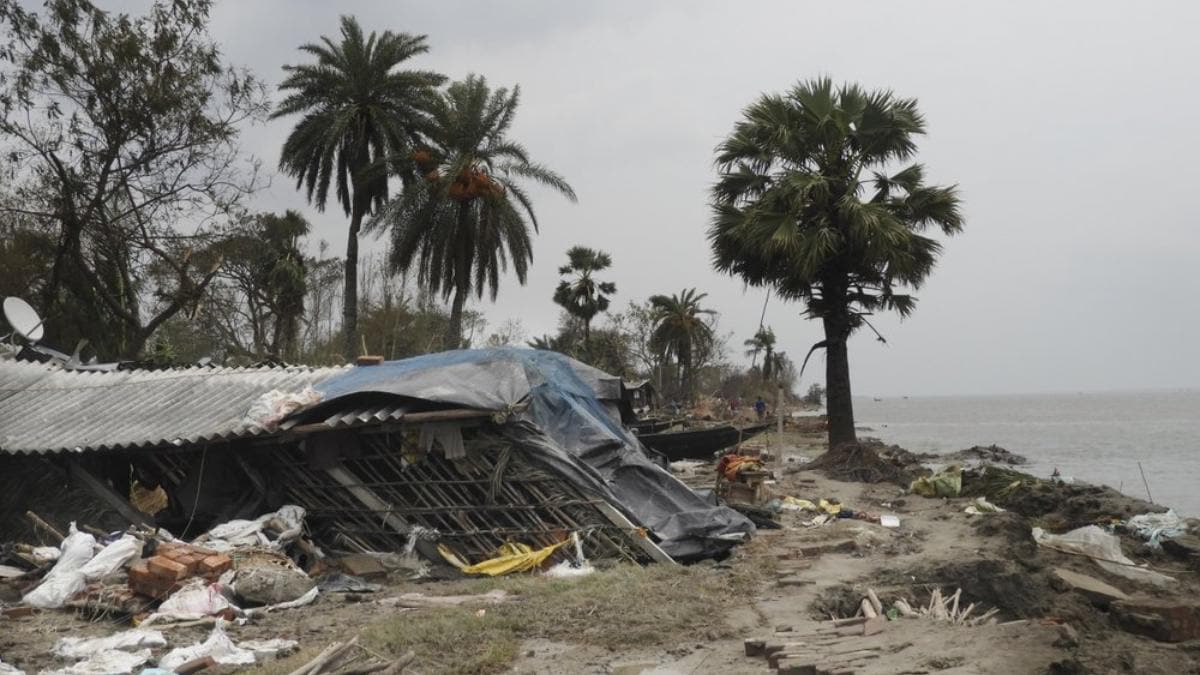
Disaster Strike In Sundarban Delta:
Only when a disaster strike does the world appear to pay attention to the Sundarbans. After the Sundarbans were devastated by the supercyclones Amphan and Yaas, charities, celebrities, clubs, and ordinary people organised a number of crowd financing campaigns to raise money to provide relief supplies to the cyclone victims. It was undoubtedly a supportive act that assisted the Sundarbans’ inhabitants in surviving and coping with the disaster. However, the Sundarbans’ impending scale of tragedy needs more than just disaster relief. We will discuss more how the delta of the Sundarbans in danger.
Climate Change In Sundarban
Several recent events, including Aila, Fani, Bulbul, Amphan, and Yaas, have demonstrated how susceptible the Sundarbans are to the whims of climate change. The frequency of high to very high-intensity cyclones has increased by 26% over the past 120 years, according to a review of cyclonic occurrences in the Bay of Bengal. We should also include recent evidence of a speeding up of the global sea level rise (given the current emission trajectory, per the 6th assessment report of the Intergovernmental Panel on Climate Change).

Based on this, experts predict that by the middle of the century, most of the Sundarbans will likely be underwater and those that are left might be threatened by saltwater intrusion. As a result, Kolkata will be at the centre of one of the worst humanitarian problems. A total of 4.5 million people live on 54 of the 104 islands in the Sundarbans area of India. Let,s know more about the delta of the Sundarbans in danger.
In this area, one in five homes now has at least one relative who moved to another state in pursuit of employment. Environmental pressures have already negatively impacted livelihood security in an indirect manner and have contributed to the economic conditions that make more migration necessary. Additionally, as land is being absorbed by the sea, tigers and people are being forced into a smaller and smaller areas, increasing human-animal confrontations.
Method To Visit In Sundarban
The only method to visit the deep mangrove forest, which is also a declared national park, tiger reserve, and biosphere reserve mostly from October to May before the intense monsoon storms, is by boat, and even spending days on the water, one may not see either of the two emblematic animals here. Ironically, the International Union for Conservation of Nature (IUCN) Red List of Threatened Species has listed both species as endangered.

However, one species is completely in the public eye, with millions spent on its protection and conservation, while the other perishes quietly, unnoticed, and unrecognised. If you’re wondering which is which, the Sundari tree regrettably struggles to maintain its position whereas the Bengal tiger is the former. Sundari is Bengali for “the lovely.” And very few people now would remember that the mangrove forest itself is named after the formerly numerous Sundari tree, a UNESCO World Heritage Site. Let, us know more about how Delta of the Sundarbans in danger.
In Bangladesh and India’s Sundarbans, the Sundari mangrove tree species predominate. It is a species of mangrove in the Malvaceae family and is referred to by its scientific name, Heritiera fomes. The Sundari tree may reach heights of up to 60 feet and girths of six feet. The tall, robust tree, which has elliptic-shaped leaves and fruit that is rich in micronutrients, is endangered by overharvesting, a rise in salinity that results from water diversions in the Ganges Basin, coastal expansion, and a disease called top-dying.
According to a Dhaka Tribune article from July 2018, “top-dying sickness” has claimed the lives of 1.44 million cubic metres of Sundari trees over the past 30 years, costing 2,000 crores of Bangladeshi Taka. We will discuss more how the delta of the Sundarbans in danger.
Sundarban Traditional Folk Medicine
It is a significant timbre-producing tree with uses in traditional folk medicine, as shown by the widespread usage of the locals and traditional healers in the treatment of diabetes, hepatic illnesses, gastrointestinal disorders, goitre, and skin ailments. The Sundari tree has been shown to have strong antioxidant, antinociceptive, antihyperglycemic, antibacterial, and anticancer properties, according to a number of studies.

The species is currently in danger of going extinct in West Bengal as a result of historical over-logging for its valuable wood and the current sea level rise. As the species has a lesser tolerance for salty seawater and there isn’t much high land remaining, especially on the Indian section of the Sundarbans, it is quite difficult to find a Sundari tree there. In addition to raising ocean salinity, global warming has also raised surface temperatures, according to Santhosha Gubbi, IFS, Divisional Forest Officer, Sunderban Biosphere Reserve. Let, know more about how Delta of the Sundarbans in danger.
Illegal logging of Sundari trees occurs unabatedly in the Bangladesh Sundarbans. The evil side of the wood industry in Pirojpur’s Nesarabad, the largest floating timber market, was exposed in an article written in February 2016 by Habibur Rahman and Andrew Eagle for the Daily Star. Sundari logs were publicly traded prior to 1985 when the species was protected and the falling, selling, and shipping of Sundari logs were outlawed in reaction to the species’ dwindling population. Their sale has continued for 31 years, according to the article. We will discuss more how the delta of the Sundarbans in danger.
Read More:
According to one source, “smugglers utilise a variety of strategies. Sometimes Sundari logs are wrapped with coconut coir, bags, or other merchandise to prevent detection. There is money to be made since Sundari timber sells for between 400 and 1500 Bangladeshi Taka per cubic foot, depending on size.
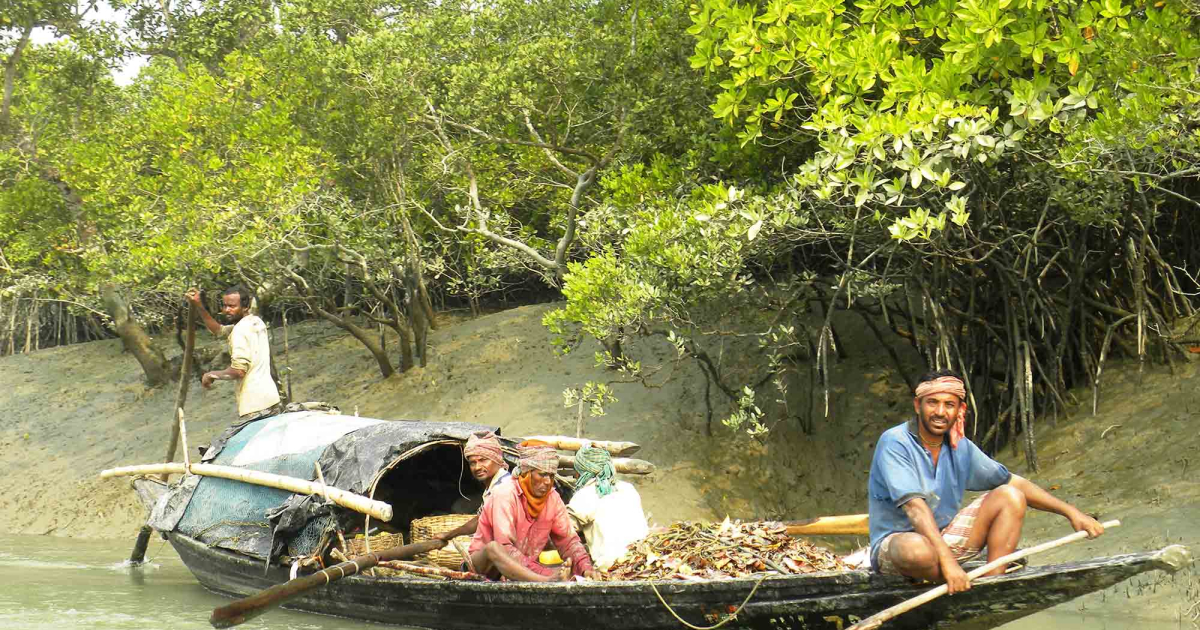
Rising Salinity
According to research by the Indian Institutes of Technology, Sundari mangroves favour exceptionally low salinity conditions (5–15 PSU/Practical Salinity Unit), unlike other mangrove species, and can thus serve as a biological indicator of climate change connected to sea level rise. When the environment is low in salt, the tree may grow luxuriantly. According to physiological research, mangroves are salt-tolerant, not salt-lovers. However, excessive salinity stunts the growth and development of mangroves as well as the generation of seeds. The species becomes stunted, scarce, and eventually extinct as the salt rises.

According to the research, because chlorophyll is a crucial raw material for the operation of the process, salinity’s negative effects on a species’ leaf chlorophyll may have a substantial impact on how quickly photosynthesis occurs. Studies have indicated that a variety of mangrove species thrive at salinities between 4 and 15 PSU, while Sundari prefers a considerably lower salinity range. After one to two weeks of exposure, plants at 15 PSU become acclimated to salt, but above 20 PSU, seedlings find it difficult to adjust.
Danger Of Extension Of Sundarban Species
Up to 150 species every day go extinct. Between 18,000 and 55,000 species go extinct yearly. When vital species like the Sundari begin to vanish from their environment, the story of species loss becomes even bleaker. The globe is approaching the sixth mass extinction episode, according to 2015 research by Stanford University wildlife scientist Paul R. Elrich and National Autonomous University of Mexico ecologist Gerardo Ceballos and other colleagues. According to the updated study, which was released on June 1st, the rate of extinction of species is most likely substantially higher than previously believed.
“The loss of a species is irreversible,” the authors warn us, “each of them playing a greater or lesser part in the living systems on which we all depend.” We will discuss more how the delta of the Sundarbans in danger.
Comparatively speaking to invertebrates and plant life, studying and monitoring species decline in terrestrial vertebrates is a considerably more doable endeavour. Even more quickly as science can research and understand them, species are vanishing. The United Nations is refocusing attention on biodiversity this year with the theme “Time For Nature” on June 5, which is designated as World Environment Day, in order to encourage environmental awareness and action around the world.
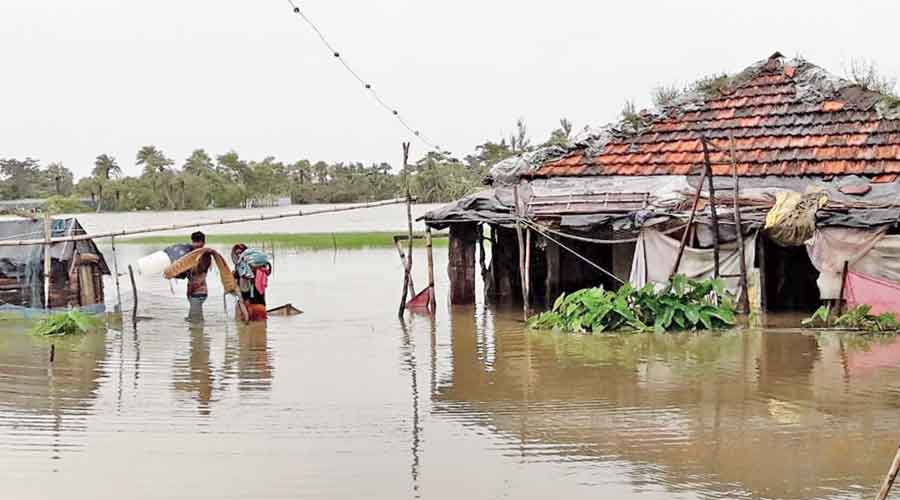
The Sunderbans are steadily diminishing, according to satellite data analysis by Earth.Org. Since 1991, “the forest has been losing roughly 16 sq km of vegetation each year due to human encroachment and climate change.
” Prior to two weeks ago, Kolkata and the surrounding forest were both affected by Amphan, the largest cyclone in recorded history (pronounced as “Um-p un”, meaning the sky). All low-lying regions were submerged by the enormous storm surge, which is believed to have been five metres (16.5 feet) high, leaving a path of devastating devastation.
Cyclonic storms In Sundarban
Cyclonic storms are common in the 10,000 sq km Sunderbans region, although they have become more frequent and intense recently. The mangrove jungle has seen two storms in the past six months: cyclones Bulbul in November of last year and Amphan in May of this year.
Amphan clearly left behind a flood of humanitarian crises (along with the lockdown to contain the COVID-19 epidemic), but it is still unclear what damage it caused to the Sundarbans’ natural environment.

Former Sundarbans National Park director Pradeep Vyas claims that the super cyclone may have killed and uprooted several species that live in the delta. A significant number of residents, including fish, reptiles, and mammals, are likely dead as a result of the storm, however, the extent of the destruction is unknown. But I worry that when prey populations decline, particularly those of wild boar and deer, the tiger’s food supply may also decline. This might exacerbate the conflict between humans and tigers in the area.
Sundarban Eco System
According to experts, without the Sundarbans, the loss of human life and means of subsistence may have been far worse. Before the storm makes its way into human settlements along the edges of the forest, this special coastal ecosystem shock is reported to lower wind speed by 20 to 25 km/h and absorb the first force of the storm. We will discuss more how the delta of the Sundarbans in danger.
Mangroves are built-in biological barriers that are resistant to cyclones and other severe weather, shield coastal settlements from regular storm surges, and slow down the intertidal zone’s long-term degeneration. The long-term impacts of climate change, however, could eliminate this natural defence mechanism. Mangroves sequester 14% of the world’s coastal carbon, according to research.
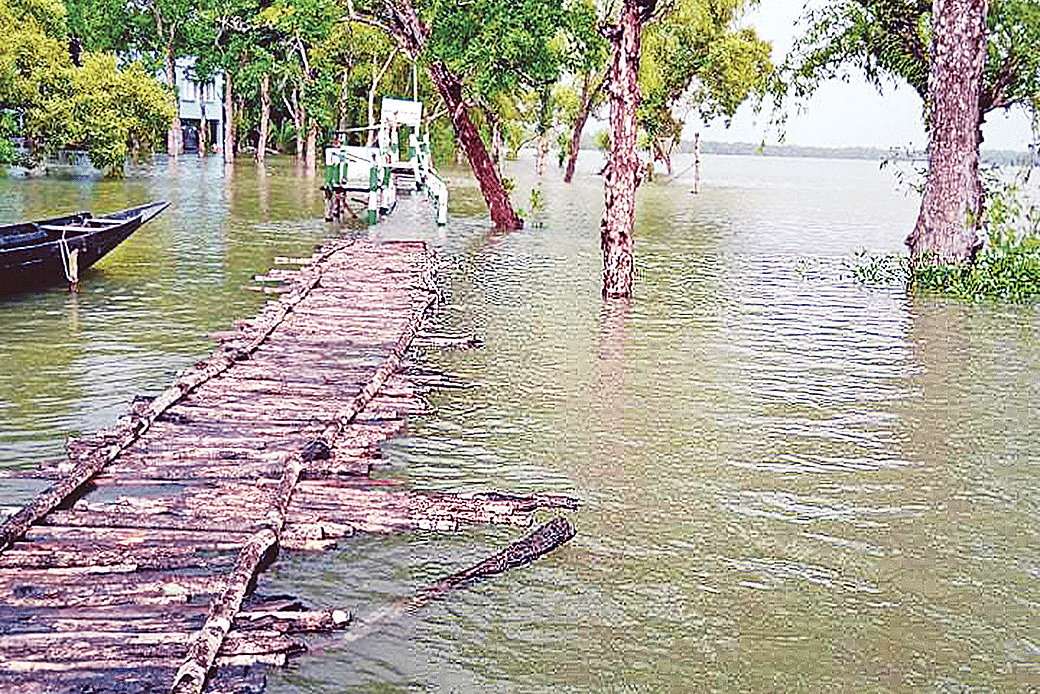
One of the reports following Amphan is that the foliage in the nearby woodland has turned yellow as a result of the cyclone’s high salty water discharge. The current state of the water in the several river channels in the Sunderbans is a direct result of the sluggish, constant, and declining flow of fresh water downstream, one of the many environmental effects of dams on rivers.
In 1975, a few kilometres before the Ganga meanders into Bangladesh, the contentious Farakka Barrage (dam) was built on the “holy river” of India. The sea filled up the gap left over the years as the flow of freshwater decreased due to diversion for agricultural and other developmental requirements, notably in the delta. We will discuss more how the delta of the Sundarbans in danger.
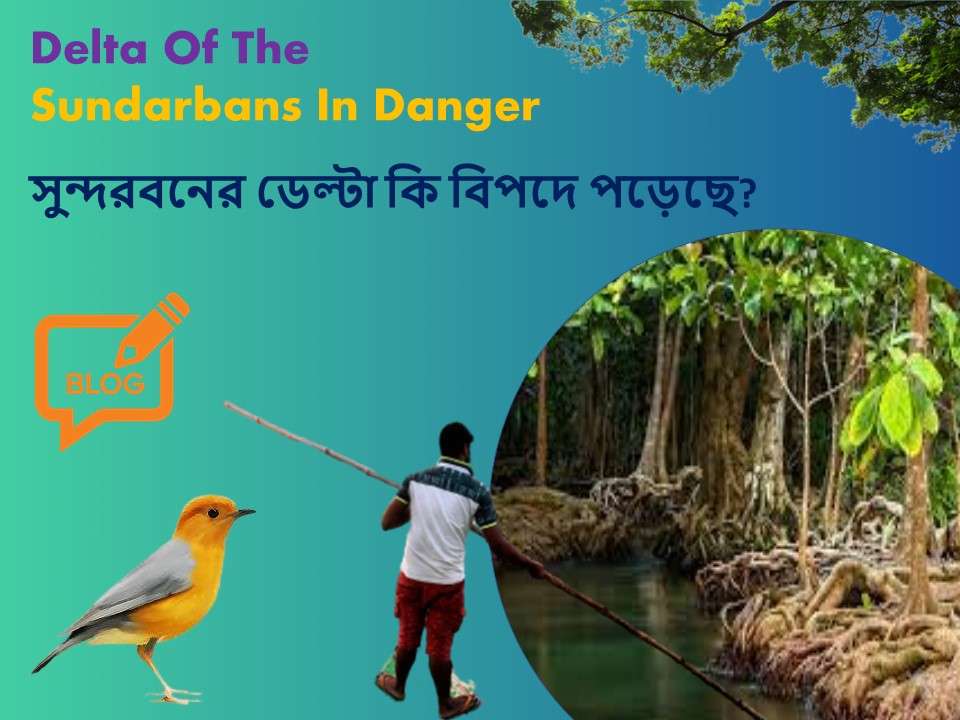
The whole central and western region of the Indian Sunderbans is now a backwater of the sea, according to Vyas, who has worked in the Sundarbans for twenty years. Except during the monsoon season, the broad Malta River that we all traverse to enter the tiger reserve is brackish. According to my calculations, Sundari trees in the Indian portion of the Sunderbans have seen a startling 95% reduction.

The few remaining trees are located near the international border with Bangladesh, although they are not even close to the size of a magnificent Sundari, which may be found in the eastern Sunderbans of Bangladesh. Species like Dhundul (Xylocarpus granatum), Passur (Xylocarpus moluccensis), Kankra (Bruguiera gymnorhiza), Gewa (Excoecaria agallocha), and Goran (Ceriops decandra) have multiplied and occupied the space left by the Sundari in the Indian portion of the jungle.
Study Of Sundarban
Swapan Kumar Sarker’s study, where he has seen the local extinction or range contraction of numerous endemics like the Sundari in the Bangladesh Sunderbans in the last three decades, also draws attention to this change in species composition. “I discovered that the main stressors that adversely impacted the variety and distinctiveness of the mangrove ecosystems in the Sunderbans were historical tree removal, siltation, disease, and soil alkalinity.”
According to Sarkar’s research, the Bangladesh Sundarbans, where the “top-dying sickness” is causing havoc, are not protected from the Sundari. The damaged trees lose their tops and develop “heart-rot,” or swelling and many knots, on their stems. According to a 2018 article in the Dhaka Tribune, during the 1980s, “top-dying sickness” destroyed 15% of Sundari trees. We will discuss more how the delta of the Sundarbans in danger.

Experts claim that microbial-fungal infections and insect pests have also been brought on by rising temperatures and increased salinity. Heat records have been breaking every year since 2015, making the last five years the warmest on record. Through the study of remote sensing data, researcher Katie Louise Awty-Carroll and her team from the Department of Geography and Earth Sciences at Aberystwyth University in the UK have shown that there is a 25% downward trend in mangrove cover as a result of die-back on Sundari trees. We will discuss more how the delta of the Sundarbans in danger.
Future deterioration in these places is now more likely, especially if extreme occurrences like cyclones become more frequent.
Sundarban Ecological Conditions:
Forest guard Amin Chand Mondal (also in the video interview) recalls the 1970s and 1980s when logging permission was granted in several forest blocks for the Sundari as he navigates one of the numerous tiny streams in the mangrove near Bonnie camp (21°49’50″N, 88°37’24″E).
This likely spelt the end for the species because its wood was highly valued for use in boats, bridges, and buildings. According to Mondal, the vast majority of the majestic, ancient Sundari trees were cut down due to human greed; those that survived had an existential crisis. The Sundari tree used to be common in the mangrove forest, but finding one now is like hunting for a needle in a haystack.

In the West Bengal Forest Department, there are many people like Mondal who bravely protect the nearly impenetrable Sundarbans mangrove, day and night, despite challenging weather conditions and the constant threat of life from wild animals, particularly the tiger. We will discuss more how the delta of the Sundarbans in danger.
They have a keen eye for recognising endangered animals, poachers, and even illegal honey gatherers. They are familiar with every little creek and island in this deep forest (which to an outsider seems the same). When a visitor or naturalist asks about the illusive Sundari, they are almost always baffled, especially the elder generation. Except for the little plantings carried out by the forest department at their outposts, several of the younger guards have never seen Sundari. We will discuss more how the delta of the Sundarbans in danger.
For a number of years, visitors—including scientists—have returned despondent from the forest after failing to see the species. It is not ironic that none of the posters, brochures, or other visual representations of the Sunderbans that promote and describe the area ever include the Sundari tree. Instead, the red mangrove (Rhizophora apiculata, also known as Gorjon locally), which is its hallmark species, is what we can observe.

